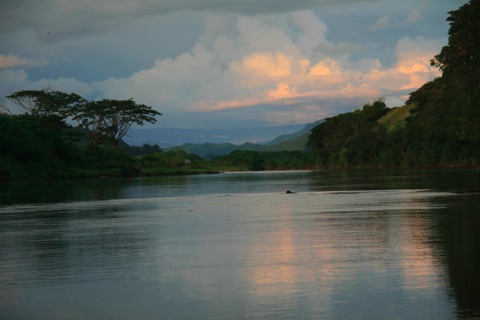WELCOME TO THE FIJI and the NAHENAHE CAVES
By Doreen Kerby
One of my most exciting experiences on Viti Levu, the largest of the Fijian Islands, was a trip to the Nahehe Caves. The trip was supposed to take us 50 minutes by coach, going north through Sigatoka. But the road was in terrible shape because of heavy rains so that 50 minutes stretched into two hours of discomfort. Having said that, it was an experience I will never forget.
When we reached the Sigotoka River we took a 35-minute bilibili ride (a bamboo raft) up the river, crossing to the other side. These rafts are still the traditional mode of travel and since I wasn’t doing the work, I enjoyed it immensely. Another hour of hiking got us to the cave, much of it on a rocky path only used by the locals, but picturesque every step of the way.
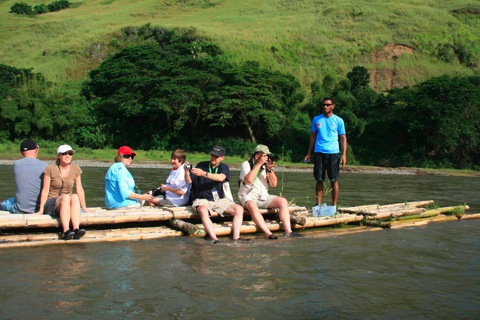
On reaching the Caves, we had to crawl on all fours to get through the opening, wading through a shallow river to get inside and it was dark.
Our cameras were our greatest concern but the guides handled them so we could concentrate on where we were going. They had good flashlights so once we could stand up right, we were fascinated with the stalagmites, stalactites, and flowstones inside the cave. Rest assured we had been told there were no bats or creepy things to worry about.
It was the history of the caves that made us so determined to get there. We saw a ritual platform, priest chambers, huge caverns, and a cannibal oven! This was the home of the last cannibal tribe of Fiji. Hundreds lived inside these caves for months, resisting conversion to Christianity. Cannibalism was widespread throughout Fiji and extremely important in the pre-Christian era. Some tribes loved the taste of human flesh.
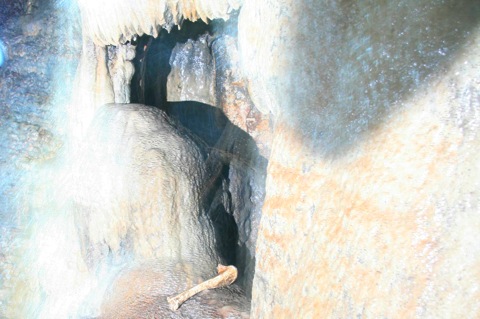
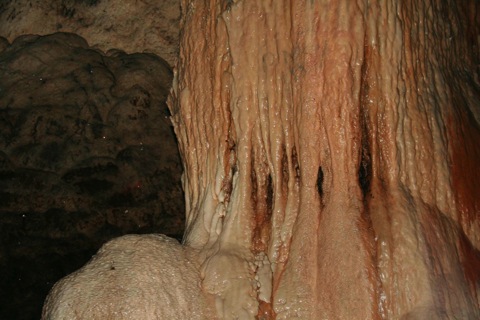
Fijians were not without a gruesome sense of humor. They got pleasure in cutting off a piece of flesh – an arm for example, cooking it, and offering a piece to the victim. Accounts of early missionaries are filled with atrocities, too gruesome to relate.
Victims were not just randomly selected but were almost always enemies taken during battle. Eating your enemy was their ultimate disgrace and explains the extremely vicious infighting. The skullcap of a defeated warrior might be polished and used for a kava cup to humiliate him even more. Much of this fierceness is proudly exhibited in Fijian dances. Even young school children performing these dances get great delight out of frightening their audience.
Other ghastly practices included hanging captured enemy children by the feet from the sail yards of war canoes; burying men alive in the post holes of new homes or temples; strangling women at the graves of chiefs so they could accompany them into the spirit world. The farewells of some of these women are remembered today in dances and songs known as meke.
The early 1830s saw the arrival from Tonga of the first missionaries. The Methodists based at Lakeba in 1835 rendered the Fijian language into writing. Christianity made little progress until the powerful chiefs were converted.
The last recorded act of cannibalism was that of a Methodist missionary, Rev. Thomas Baker and seven of the nine members of his party at Nabutautau in 1867. The minister made the mistake of touching the chief’s head, an act of war. He was immediately axed to death along with seven of his nine converts, cooked and eaten.
To make amends the town has built the Thomas Baker Memorial School and because of its success it was followed by the Thomas Baker High School. In 2003, 600 people gathered for a formal apology that included descendants of the Chief, Thomas Baker, and his Christian helpers. In the Museum in Suva, a picture of Thomas Baker, his Bible, and the soles of his boots are displayed in a glass case. The shoes were too tough to eat!
In spite of such an interesting history that was 150 years ago. Today, they proudly enact the fierceness of those early warriors in many of the dances performed by the men. Having said that there is gentleness in many of their songs. Fijians have beautiful voices and both men and women love to sing – always in a cappella. They are also very kind. In all the time I was there I never heard a harsh word, a swear word or anything that was negative. My outstanding memory of Fiji will always be the genuine responsiveness of the people. They are reputed to be among the friendliest in the world. I believe that is true.
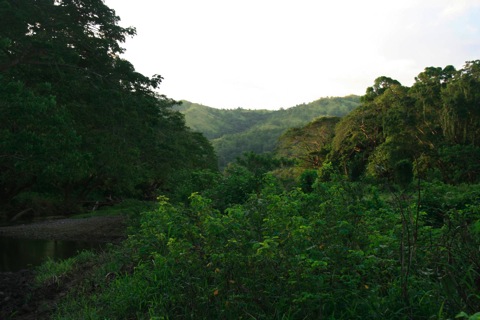
For more information on Fiji go to www.www.fijime.com
Air Pacific – 9 hours and 40 minutes from LA to Nadi.
From 1874 to 1970 Fiji was a British colony and English is the official language.
